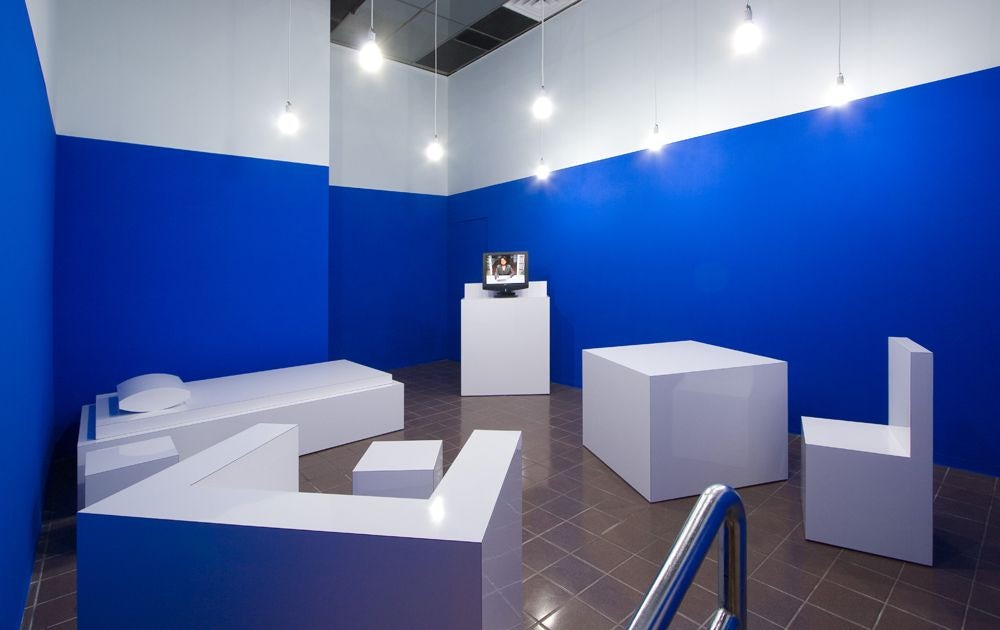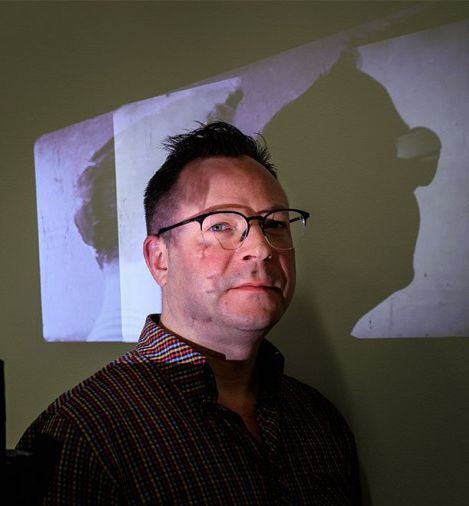
Mathieu Beauséjour
1 1/2 Métro Côte-des-Neiges
2006.09.09 - 10.21
BERNARD SCHÜTZE
Mathieu Beauséjour’s exhibition 1 1/2 Métro Côte-des-Neiges is a rereading, literal and figurative, of the FLQ manifesto proclamation broadcasted by Radio-Canada television during the 1970 October crisis. Cognizant of the still active charge and semiotic terrorist potential of this singular media event, Beauséjour has handled the material with care. Opting to re-fuse rather than defuse this airtime bomb, he has undertaken to dislodge it from its historical location and settled it in new quarters. The gallery’s main room is a modular apartment space defined by glossy volumes of white furniture and rudimentary architectural elements housing a flat screen TV that plays a 12- min. video loop. On screen a French woman reads the manifesto in English. This twice translated rendition—first in the written text and again in the heavily accented voice of the speaker—uproots the manifesto from its cultural ground and troubles the politico-linguistic nexus at the heart of the protest. The doubling and distancing strategy at work in the video performance has no bearing beyond the atemporal modern space that structures its reception as an event.

As the title indicates, the simulated 1 1/2 dwelling space references class status, thus placing the viewer in a subject position that corresponds to the manifesto’s rhetorical device of directly addressing the common worker in a specific social location: “… you, Mr. Tremblay of Panet Street… You, Mr. Bergeron of Visitation Street…” However, the bareness of the white space evacuates any reference to an everyday or a temporality thereby increasing the ambient ambiguity. In the gallery’s adjacent mezzanine, three photographs, each centred on a vast black backdrop, seem to provide guideposts to ground the uncertain elements of the main room. By combining an image of the original historical media event with a period location shot, and by ending the series with a semiotically charged logo that yokes the first two letters of the FLQ acronym with the standard Québec government logo, the triptych establishes a pictorial dialectic with a distinctly indecisive outcome. This irresolution and ambiguity is further underscored and contrasted by the black backdrop of the posters and the white volumes of the recreated 1 1/2. Thus, by artistically reworking the manifesto, which combines revolutionary combat and national liberation, and by re-injecting it into today’s context, Beauséjour poses the unpopular question of whether the increasingly comfort predicated and State oriented national quest still has any bearing on liberation at large.
The artist thanks Nathalie Bujold, Nicolas Côté, Peter Dubé, Dr. Paddy Glackin, James Hollands, Maryse Larivière, Christian Miron, Daniel Olson, Bernard Schütze, l’Atelier Clark, Pavillon Projects, the Canadian Arts Council and le Conseil des arts et des lettres du Québec.
